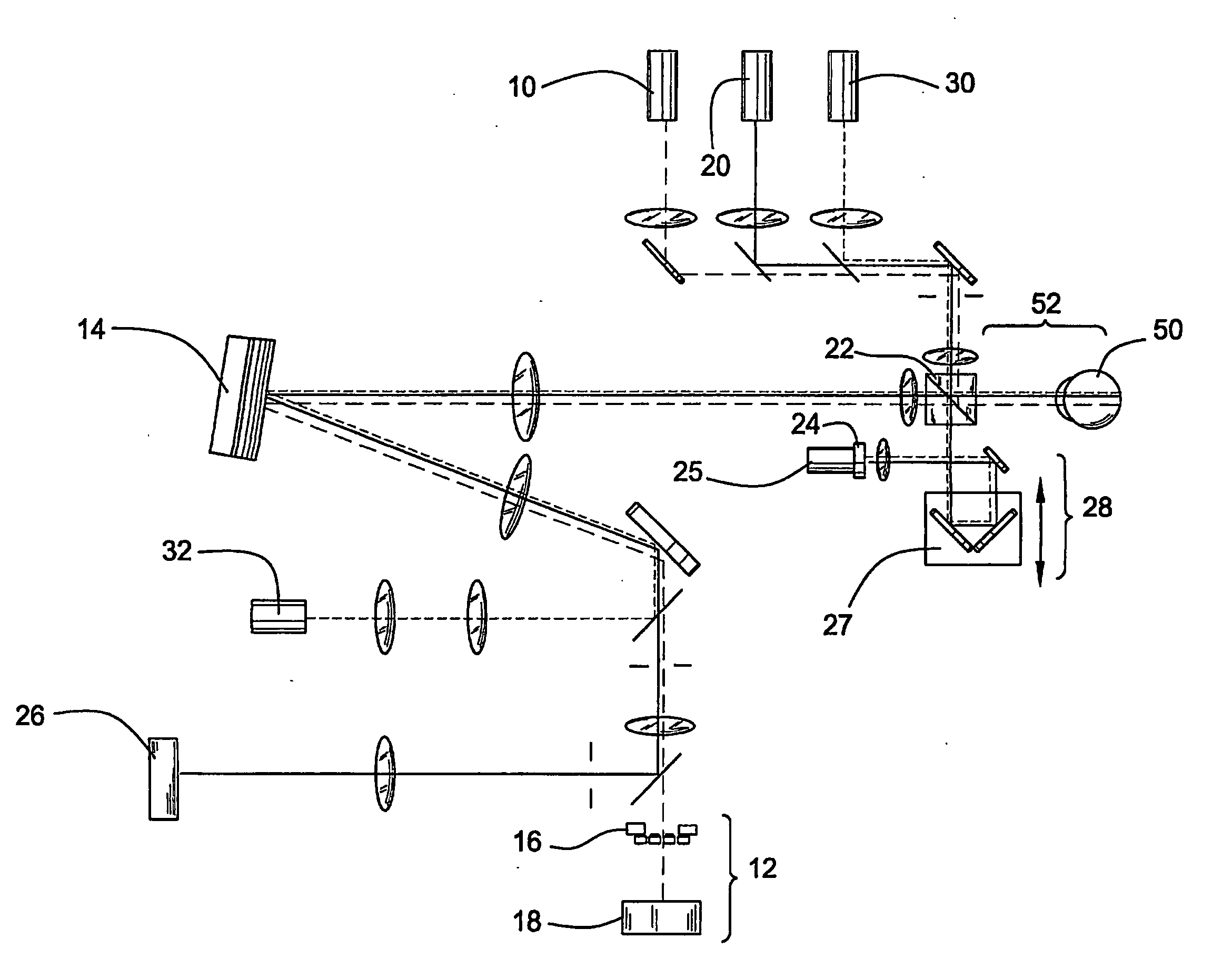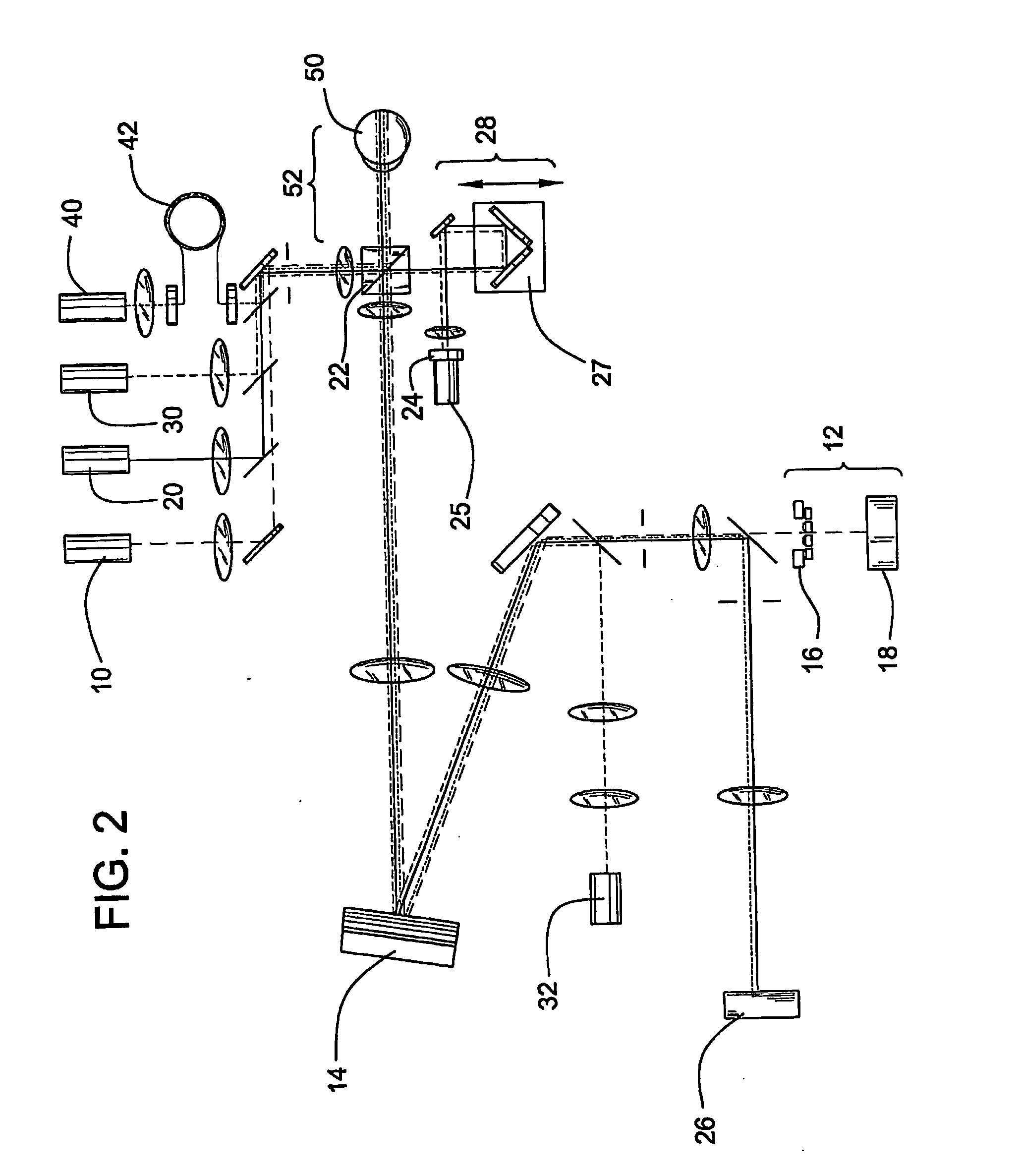Method and apparatus for improving both lateral and axial resolution in ophthalmoscopy
a technology of ophthalmoscopy and lateral resolution, applied in the field of optical imaging methods and equipment, can solve the problems of untapped potential benefits of observing retinal cells, difficult retinal microscopy, and less than 0.2% of human retinal cells being visualized
- Summary
- Abstract
- Description
- Claims
- Application Information
AI Technical Summary
Benefits of technology
Problems solved by technology
Method used
Image
Examples
example 1
[0057] This example demonstrates a method of optical imaging that combines optical coherence tomography and adaptive optics.
[0058] A parallel OCT system based on a free-space Michelson interferometer design was constructed. The OCT system comprised a superluminescent diode having a wavelength (λ) of 679 nm, a voice coil and piezo-electric translators (Polytec PI, Auburn, Mass.) for adjusting the OPL of the reference channel, and a scientific grade 12-bit CCD array camera for detecting and recording the 2D interferograms. En-face image slices of an in vitro bovine retina were obtained using a four-step phase shift reconstruction method. The system collected four images over a 7 msec time period. Each image required a 1 msec duration followed by a 1 msec delay to allow λ / 8 movement of the piezo-electric reference mirror, corresponding to a λ / 4 phase delay. The dynamic range of the OCT system was measured by positioning a planar mirror in the sample channel and sweeping the reference ...
example 2
[0061] This example illustrates the optical imaging method of the invention comprising the use of an AO-OCT retina camera
[0062] AO-OCT Camera Description: An AO-OCT retina camera was developed based on a free-space Michelson interferometer design. A flood-illuminated en face OCT scheme was chosen that acquired aerial images of the retina with a scientific-grade CCD camera. A major strength of this parallel approach was its insensitivity to retinal motion blur as thousands of points could be collected simultaneously. An additional advantage was its compatibility with adaptive optics. The camera consisted of four independent yet highly synchronized subsystems to perform AO, 2D low coherent flood illumination imaging, 2D en face OCT imaging, and 1D-OCT axial scanning. Each subsystem is described below.
[0063] AO Subsystem: The AO subsystem consisted of a 37 actuator Xinetics mirror and a Shack-Hartmann wavefront sensor employing a 17×17 lenslet array. Light from a 788 nm SLD enters th...
PUM
 Login to View More
Login to View More Abstract
Description
Claims
Application Information
 Login to View More
Login to View More - R&D
- Intellectual Property
- Life Sciences
- Materials
- Tech Scout
- Unparalleled Data Quality
- Higher Quality Content
- 60% Fewer Hallucinations
Browse by: Latest US Patents, China's latest patents, Technical Efficacy Thesaurus, Application Domain, Technology Topic, Popular Technical Reports.
© 2025 PatSnap. All rights reserved.Legal|Privacy policy|Modern Slavery Act Transparency Statement|Sitemap|About US| Contact US: help@patsnap.com



